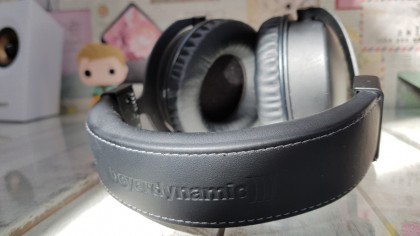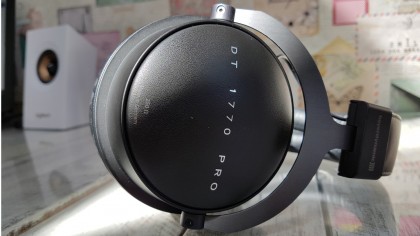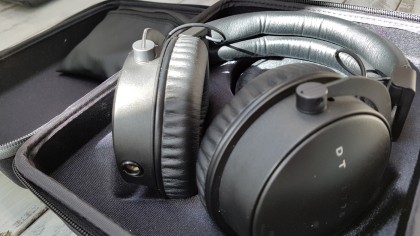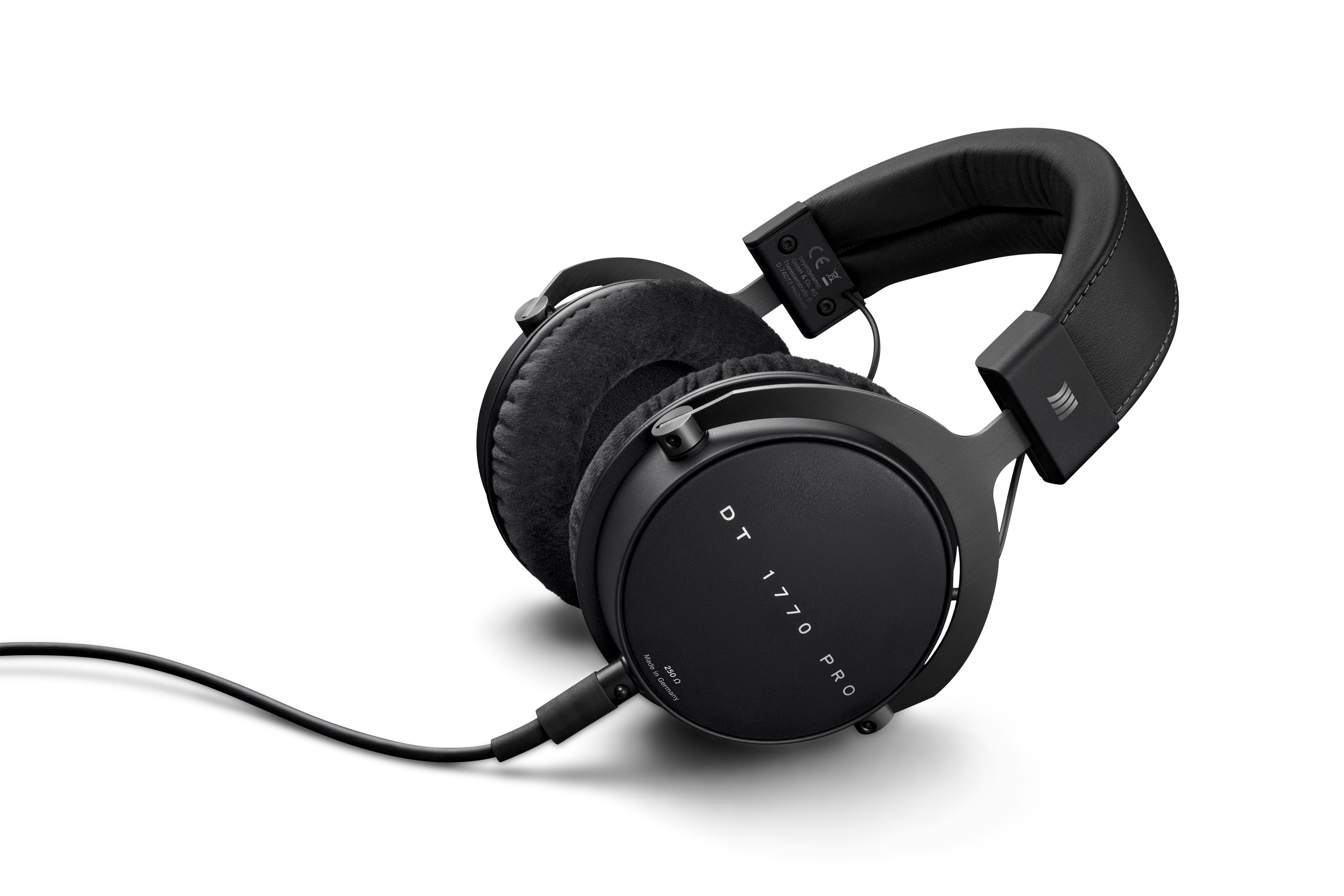TechRadar Verdict
Beyerdynamic's DT 1770 Pros are everything a pair of entry-level audiophile headphones should be. The width of that sound stage, particularly for a pair of closed-back headphones, is exceptional. They're a little bulky, but don't let that put you off.
Pros
- +
Beautifully crafted soundscape
- +
Sleek design
- +
Good price for the quality
- +
Work with portable players
Cons
- -
They're a bit bulky
Why you can trust TechRadar
Let's cut to the chase: £430 / $600 / (around AU$800) for any pair of headphones is a lot of money for most people. Unless you're deep within audiophile circles, and happy to drop a great deal of your hard-earned cash on the latest amplifier and DAC setup, it's not going to be a purchase you make lightly.
And when you do commit to such a purchase there are going to be certain brands you trust: Sennheiser, Shure, Audio-technica and Beyerdynamic spring to mind. I don't include Beats, as while its headphones may act as a gateway drug for some, drawing them into the silky depths of auditory ecstasy, it's a brand that doesn't hold a candle to the big boys, and with good reason.

Those companies have earned their reputation through thousands of hours spent labouring within the deep dark corners of audio R&D.
The DT 1770 Pros are a step away from what we're used to reviewing. They're a pair of studio-class reference headphones, built from the ground up to operate in the professional recording dens of the world.
Why should you be interested then? Well, simply put, they provide some of, if not the best audio reproduction you can get at this price point. And they have the specs to back it up. Frequency Response? 5Hz-40,000Hz. Impedance? 250 ohms. Transducer type? Beyerdynamic's own Tesla Dynamic tech. Whetted your appetite yet?
Build quality
The overall design of the DT 1770 Pros speaks to that studio pedigree. They're not as classy as, say, the Oppo PM-3s or Denon's AH-MM400s – far from it. It's all about function, about precision, about making sure the sound is as enjoyable, accurate and clean as possible.
The aluminium housing holds the drivers in place, ensuring minimal movement; the adjustable support bars, connecting the two ear cups to the upper headband, are sturdy and secure; the dual-layered memory foam padding lining the top of the leather headband is comfortable yet taut.

Included are two sets of swappable ear cups, velour and leather; although they're troublesome to swap out, it's nice to have the choice. And they provide a phenomenal amount of noise dampening or comfort, depending on your preference. They're big – not huge, but noticeably big. You wouldn't wear them about town, or at the gym, as much as you might want to – but then that's not what they're designed for.
The cable is removable, and Beyerdynamic has included two options here as well, either your standard 3M cord or the more studio-style, coiled wire, both with a gorgeous soft-touch rubber finish, both with detachable (screw-on) 3.5mm to 6.35mm jacks, and both connecting to the headphones themselves via a miniaturised XLR input, to reduce noise and improve stability.
You even get a swanky black carry case to carry everything in.
Auditory perceptions
I tested the DT 1770 Pros thoroughly over the course of two months, alongside a plethora of other headphones from the likes of Oppo, Shure, Sennheiser and Audio-Technica.
I ran all the headphones separately through Denon's respectably-priced DA-300USB DAC while listening to YouTube, Spotify's AAC streams, and 1411Kb/s FLAC files thanks to Tidal, all at 192kHz 24-bit sample rate, with the aim of getting as wide a scope as possible for almost all listening scenarios.
Ultimately, the 1770 Pros impressed the most. The sound profile was exceptional. The range, thanks to that phenomenal frequency response, was expansive, crisp and clear; nothing was missing. The bass was incredibly powerful, yet it remained so without touching the mids at all. The treble was crunchy, vibrant and, thanks to that phenomenal headroom, had its chance to shine.

Neo-orchestral score and classical orchestra shone with these around my ears, and listening to the likes of Rodrigo y Gabriela for acoustic track testing felt akin to having the two gifted guitarists in the room with me – you could hear every nuance as their fingers slid up and down the fretboards.
Metal, rock, pop, punk, synthetic and indie were equally as joyous to listen to, sweet delights to the ears. I sound like a press release, I know; but honestly, given all the other headphones I had in house, there was very little competition to these when it came to soundscape. It was enough to make the soul sing; it left you sitting there, your hairs tingling on end, as if you'd just heard your favourite songs again for the first time.
Ultimately I could speak volumes as to how these headphones made me feel, but it's truly something you ought to experience for yourself.

Zak is one of TechRadar's multi-faceted freelance tech journalists. He's written for an absolute plethora of tech publications over the years and has worked for Techradar on and off since 2015. Most famously, Zak led Maximum PC as its Editor-in-Chief from 2020 through to the end of 2021, having worked his way up from Staff Writer. Zak currently writes for Maximum PC, TechRadar, PCGamesN, and Trusted Reviews. He also had a stint working as Corsair's Public Relations Specialist in the UK, which has given him a particularly good insight into the inner workings of larger companies in the industry. He left in 2023, coming back to journalism once more. When he's not building PCs, reviewing hardware, or gaming, you can often find Zak working at his local coffee shop as First Barista, or out in the Wye Valley shooting American Flat Bows.
